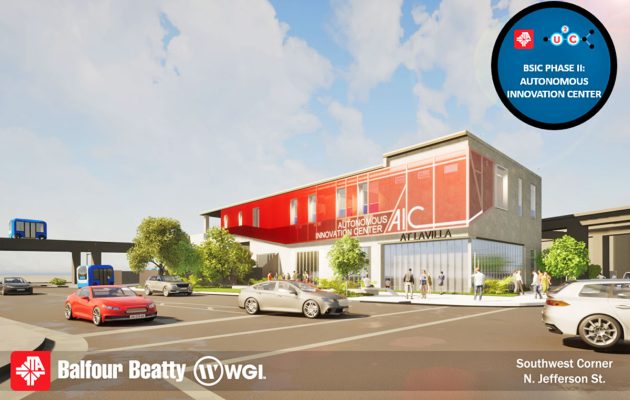Budget Bumps to $65.6M for Autonomous Vehicles

An update on the Ultimate Urban Circulator Program
At its September meeting, the Jacksonville Transportation Authority (JTA) board approved an additional $15.5 million in the budget for the Bay Street Innovation Corridor (BSIC) – the first of three phases in its Ultimate Urban Circulator (U2C) program.
This brings the BSIC budget to $65.6 million.
JTA CEO Nathaniel Ford called the U2C a “lighthouse project” that has garnered national attention. Already several years in the making, the U2C plans to bring driverless, autonomous vehicles (AVs) first to the Bay Street corridor before advancing into its next two phases, which involve a downtown service expansion – by modernizing and converting the existing Skyway (Phase 2) – and expanding into other neighborhoods (Phase 3).
“When we’re all said and done, we will deliver on our promise to keep, modernize and expand the Skyway with over 10 miles of autonomous vehicle service, revitalizing the downtown urban core of Jacksonville and providing seamless mobility solutions for all,” explained JTA Senior Vice President and Chief Infrastructure and Development Officer Greer Johnson Gillis during her presentation to the JTA board prior to its meeting.
According to Gillis, the $65.6 million budget accounts for the higher cost of labor and materials the construction industry has been experiencing these last few years. The additional $15.5 million provides funding for the following items:
- $9.4 million for the Autonomous Innovation Center, the operations and maintenance facility JTA plans to bring to Bay Street for the 12 to 15 autonomous vehicles (AVs) initially planned to operate within the Bay Street Corridor. This corridor will cover a three-mile loop traveling between Pearl Street, the downtown core and the sports and entertainment complex.
- $2.4 million for a dedicated, independent cybersecurity system
- $2.7 million for design enhancements, including those required by the Downtown Investment Authority (DIA) and the Downtown Development Review Board (DDRB), custom station designs and locations and lighting designs.
The $15.5 million also includes a $1 million in-kind contribution from the North Florida Transportation Planning Organization.
The BSIC itself is broken down into three phases. Its first phase – design – is 60% complete. Phase 2 is construction with the third and final phase being operations and maintenance.
Current timelines anticipate groundbreaking on the BSIC this December, with “shovels in the ground” the following January, explained Gillis. An anticipated two-year construction window will lead to a three-month “burn-in” period to test the AVs. JTA expects travel for public service to begin June 2025.
“Most importantly, we will have a five-year operations and maintenance plan as part of this contract, so our partners will operate and maintain the system for us for five years,” Gillis said.
Phase 2 of U2C will see funding provided by the local option gas tax in the amount of $246.7 million; an FTA RAISE grant of $1.72 million will allow JTA to begin Phase 3 planning.
“We do have a strong opportunity to get federal funding to support both Phase 2 and Phase 3,” Ford stated.
Ford went on to add U2C offers capabilities to be “scalable” and “flexible” that simply are not available in existing mobility options like buses, railcars or streetcars.
“You’re talking about a system here [where] frequency can scale up and down based on time of day, day of week, events of downtown, routes can be changed,” he said.
This fall, in partnership with FSCJ, JTA will also launch an autonomous vehicle service on the FSCJ Downtown campus, that will operate a one-mile loop between the President’s office, the Advanced Technology Center and the cafeteria.
“We’re excited about this effort because it shows that seamless mobility options are available now,” she said.
JTA will have to return to the DDRB to present the changes made to the designs for BSIC’s Autonomous Innovation Center following the August DDRB meeting and conversations with community stakeholders, including the LaVilla Heritage Committee.
It hopes to reconvene with DDRB in October.
By Michele Leivas
Resident Community News






